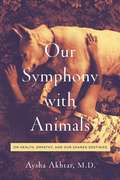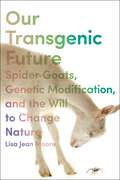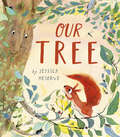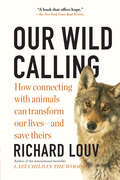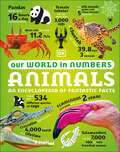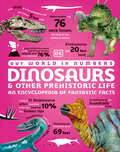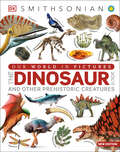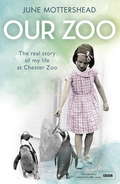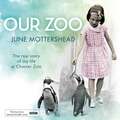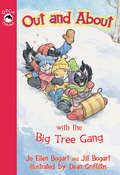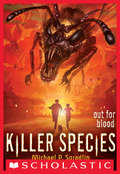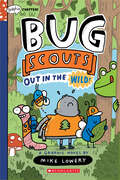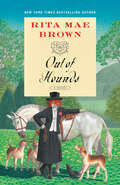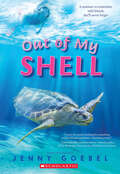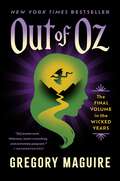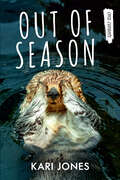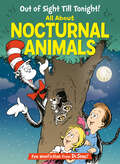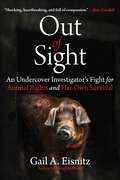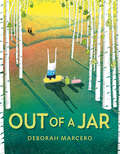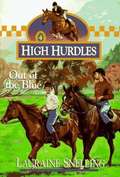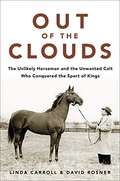- Table View
- List View
Our Symphony with Animals: On Health, Empathy, And Our Shared Destinies
by Aysha AkhtarA leader in the fields of animal ethics and neurology, Dr. Aysha Akhtar examines the rich human-animal connection and how interspecies empathy enriches our well-being. Deftly combining medicine, social history and personal experience, Our Symphony with Animals is the first book by a physician to show how deeply the well-being of humans and animals are entwined. Interwoven throughout is Dr. Akhtar’s own story of being a young girl who was bullied in school and sexually abused by her uncle. Feeling abandoned by humanity, it was only when she met Sylvester, a dog who had also been abused, that she found strength for both of them. Against the backdrop of her inspiring story, Dr. Akhtar asks, what do we gain when we recognize our kinship with animals? She travels around the country to tell the stories of a varied cast of characters—including a former mobster, an industrial chicken farmer, a Marine veteran—and comes face to face with a serial killer. Through storytelling that is entertaining, profound, and touching, Dr. Akhtar reveals what happens when we both break and forge bonds with animals. She demonstrates how humans are neurologically designed to empathize with animals, and how violence against them goes against our nature. In equal measure, the love and friendship we give to other species biologically reverberates back to us. Humanity’s compassion for animals is the next step in our species’ moral evolution and a vital component of our own health. Our Symphony with Animals is the definitive account for why our relationships with animals matter.
Our Transgenic Future: Spider Goats, Genetic Modification, and the Will to Change Nature
by Lisa Jean MooreHow scientific advances in genetic modification will fundamentally change the natural worldThe process of manipulating the genetic material of one animal to include the DNA of another creates a new transgenic organism. Several animals, notably goats, mice, sheep, and cattle are now genetically modified in this way. In Our Transgenic Future, Lisa Jean Moore wonders what such scientific advances portend. Will the natural world become so modified that it ceases to exist? After turning species into hybrids, can we ever get back to the original, or are they forever lost? Does genetic manipulation make better lives possible, and if so, for whom?Moore centers the story on goats that have been engineered by the US military and civilian scientists using the DNA of spiders. The goat’s milk contains a spider-silk protein fiber; it can be spun into ultra-strong fabric that can be used to manufacture lightweight military body armor. Researchers also hope the transgenically produced spider silk will revolutionize medicine with biocompatible medical inserts such as prosthetics and bandages. Based on in-depth research with spiders in Florida and transgenic goats in Utah, Our Transgenic Future focuses on how these spidergoats came into existence, the researchers who maintain them, the funders who have made their lives possible, and how they fit into the larger science of transgenics and synthetics. This book is a fascinating story about the possibilities of science and the likely futures that may come.
Our Tree
by Jessica MeserveFor readers ages 3-7, this is a stunningly illustrated celebration of tolerance, togetherness, and the power of community.Little Red is delighted when he discovers a beautiful tree--and he wants to keep it all to himself! But he soon realizes he is not alone in the tree. Birds stop by to rest on its branches during a long flight. An elephant uses the tree's rough bark to scratch its back. And with all of the other animals, bugs, and birds that call the tree home, it's just too noisy for Little Red! He decides to set out to find ANOTHER tree, just for himself--but when he has a scary run-in with a leopard, Little Red learns the value of sharing, community, tolerance, and friends who have your back.
Our Wild Calling: How Connecting with Animals Can Transform Our Lives—and Save Theirs
by Richard Louv“Richard Louv has done it again. A remarkable book that will help everyone break away from their fixed gaze at the screens that dominate our lives and remember instead that we are animals in a world of animals.” —Bill McKibben, author of Falter Richard Louv’s landmark book, Last Child in the Woods, inspired an international movement to connect children and nature. Now Louv redefines the future of human-animal coexistence. Our Wild Calling explores these powerful and mysterious bonds and how they can transform our mental, physical, and spiritual lives, serve as an antidote to the growing epidemic of human loneliness, and help us tap into the empathy required to preserve life on Earth. Louv interviews researchers, theologians, wildlife experts, indigenous healers, psychologists, and others to show how people are communicating with animals in ancient and new ways; how dogs can teach children ethical behavior; how animal-assisted therapy may yet transform the mental health field; and what role the human-animal relationship plays in our spiritual health. He reports on wildlife relocation and on how the growing populations of wild species in urban areas are blurring the lines between domestic and wild animals. Our Wild Calling makes the case for protecting, promoting, and creating a sustainable and shared habitat for all creatures—not out of fear, but out of love. Transformative and inspiring, this book points us toward what we all long for in the age of technology: real connection.
Our Wild Tails: The Adventures of Henry & Baloo
by Cynthia BennettTravel and pet photography come together in this coffee table book about an unusually close dog and cat pair on hiking adventures with their pet parents.Henry and Baloo are a real-life dog/cat sibling pair, based in Colorado, whose unconventional friendship has won the hearts of humans worldwide. Whether they’re scaling mountains or cozying down in a tent, these two are never far from each other’s side and always ready for their next trek. Wanting to share their explorations with friends and family, photographer and the pair’s proud owner, Cynthia Bennett, began capturing Henry and Baloo on their outdoor adventures?with vivid colors and stunning backdrops surrounding them in every shot.Now never-before-seen photos and untold stories are compiled in a book for fans to enjoy. More than beautiful photography and a sweet story, Our Wild Tails champions friendship in the most unlikely of places and proves to readers that love is universal.Winner of the Reading The West Book Award for illustrated nonfiction
Our Woodland Birds
by Matt SewellBritain has some of the most beautiful woodland in the world, with some of the most beautiful inhabitants. All year round, the trees in forests, copses and wastelands offer our feathered friends food, shelter and a place to congregate and show-off. Now, in this beautiful follow-up to Our Garden Birds and Our Songbirds, street artist Matt Sewell captures Britain’s unique woodland life with his charming and distinctive illustrations. Featuring an array of enchanting scenes, from bramble-picking Blue Tits and a flight of Finches to a parliament of young Tawny Owls, Matt’s quirky, pop-art watercolours and whimsical descriptions express the individual characters of our woodland birds as never before. A delightful gift, this book will appeal to bird-watching enthusiasts, children, adults and art and design fans alike.
Our World in Numbers Animals: An Encyclopedia of Fantastic Facts (DK Oour World in Numbers)
by DKLearn about everything in the animal kingdom with this book of extraordinary figures and number-based facts for children aged 9-12!Put the fun back into learning and take children on a number-crunching journey around the animal kingdom. From colossal mammals to tiny insects and everything in between, learn all about your favorite animals with more than 1,000 weird and wonderful numbers.Our World in Numbers: Animals will have you impressing your family and friends like never before with mind-blowing facts and stats on a vast range of different animal species. Children aged 9-12 will number-crunch their way around the animal kingdom, discovering everything from the age of the world&’s oldest animal and which bird has the most feathers, to which snake has the longest fangs and how long a tiger sleeps in a day.This animal book of fantastic figures offers:- More than 1,000 astonishing animal facts for children aged 9-12.- Different topics divided by 5 chapters, invertebrates, fish, amphibians and reptile, birds and mammals.- Eye-catching double page features, including vibrant photographs and graphics for every topic.- Fun and surprising information on more than 80 topics to engage children in the world around them.This data-packed adventure through the animal world is filled with everything you&’ve ever wanted to know about your favourite animals, with full-page photographs and fun, colorful images, wacky animal fact-bites and funky figures to become an animal expert!
Our World in Numbers Dinosaurs & Other Prehistoric Life: An Encyclopedia of Fantastic Facts (DK Oour World in Numbers)
by DKGo on a fact-packed adventure through the prehistoric world with this children’s book of figures and number-based facts!Put the fun back into learning and take children on a number-crunching journey through dinosaurs and prehistoric life. From incredible ichthyosaurs to terrifying tyrannosaurs and everything in between, learn all about the age of the dinosaurs with more than 1,000 mind-blowing numbers.This dinosaur book of fantastic figures offers:- More than 1,000 dinosaur facts for children aged 9-12.- Topics divided by 5 chapters: Before the Dinosaurs, Tremendous Triassic, Jaw-Dropping Jurassic, Colossal Cretaceous and After the Dinosaurs.- Eye-catching double-page features, including vibrant photographs and graphics for every topic.Our World in Numbers: Dinosaurs will have you impressing your family and friends with mind-blowing facts and stats on a vast range of different dino species. Children aged 9-12 will number-crunch their way around the prehistoric world, discovering everything from the fastest, biggest, and deadliest creatures to the size of dinosaurs' hearts, brains, tails, and scales.More in the seriesGo on a data-packed adventure with the Our World in Numbers series, explore the animal kingdom with Our World in Numbers: Animals, or learn about everything in the world, from animals to art, with the comprehensive Our World in Numbers.
Our World in Pictures The Dinosaur Book (DK Our World in Pictures)
by DKFind out everything you need to know about dinosaurs, pterosaurs, marine reptiles, and prehistoric mammals with this picture-packed encyclopedia of curiosities. Come face-to-face with some of the most incredible creatures ever to exist in this incredible book of dinosaurs and other prehistoric life. With more than 1,000 extraordinary images and fascinating facts, kids aged 9-12 will love poring over the pages of Our World in Pictures: The Dinosaur Book. This book brings to life all forms of prehistoric creatures through vivid illustrations and realistic digital reconstructions, showing their fearsome teeth, tails, legs and scales that enabled them to eat, move and defend themselves against predators.Celebrate your child's curiosity as they explore:- Striking and detailed diagrams, drawings, and illustrations on every page. - Covers all forms of prehistoric life, from the first primitive invertebrates to dazzling dinosaurs, and the earliest mammals. - Up-to-date, essential information about dinosaurs&’ evolution and extinction, and every aspect of dinosaur science.- Picture-heavy and text-light approach to introduce geological periods, evolution and extinction, and every aspect of dinosaur science.Young readers will love to find out about the latest scientific discoveries that have changed the way we see these fascinating prehistoric animals – from the discovery of feathered dinosaurs to analyzing what has been found in their stomachs. Find all this and more in this dinosaur encyclopedia, featuring at-a-glance panels that provide a quick reference to all the stats, making it an ideal combination of colorful diagrams and informative text boxes. The easy-to-read text is accessible for kids aged 9+, yet can be enjoyed by the entire family, making this enthralling children&’s encyclopedia a beautiful and educational gift that can be passed down generations.Learn all about the world one picture at a time!If you like Our World in Pictures: The Dinosaur Book then why not complete the collection? Part of the highly visual Our World In Pictures series, avid readers can become vehicle virtuosos with Cars, Trains, Ships and Planes, journey across the globe with Countries, Cultures, People & Places and become antiquarians with The History Book.
Our Zoo
by June Mottershead'With characteristic self-effacement, she puts the escapades of charismatic animals ahead of her own feelings.' The Guardian.When George Mottershead moved to the village of Upton-by-Chester in 1930 to realise his dream of opening a zoo without bars, his four-year-old daughter June had no idea how extraordinary her life would become. Soon her best friend was a chimpanzee called Mary, lion cubs and parrots were vying for her attention in the kitchen, and finding a bear tucked up in bed was no more unusual than talking to a tapir about granny's lemon curd. Pelican, penguin or polar bear - for June, they were simply family. The early years were not without their obstacles for the Mottersheads. They were shunned by the local community, bankruptcy threatened and then World War Two began. Nightly bombing raids turned the dream into a nightmare and finding food for the animals became a constant challenge. Yet George's resilience, resourcefulness and tenacity eventually paid off. Now over 80 years since June first set foot in the echoing house, Chester Zoo has achieved worldwide renown. Here, in her enthralling memoir, June Mottershead chronicles the heartbreak, the humour, the trials and triumphs, above all the characters, both human and animal, who shaped her childhood.
Our Zoo
by June Mottershead'With characteristic self-effacement, she puts the escapades of charismatic animals ahead of her own feelings.' The Guardian.When George Mottershead moved to the village of Upton-by-Chester in 1930 to realise his dream of opening a zoo without bars, his four-year-old daughter June had no idea how extraordinary her life would become. Soon her best friend was a chimpanzee called Mary, lion cubs and parrots were vying for her attention in the kitchen, and finding a bear tucked up in bed was no more unusual than talking to a tapir about granny's lemon curd. Pelican, penguin or polar bear - for June, they were simply family. The early years were not without their obstacles for the Mottersheads. They were shunned by the local community, bankruptcy threatened and then World War Two began. Nightly bombing raids turned the dream into a nightmare and finding food for the animals became a constant challenge. Yet George's resilience, resourcefulness and tenacity eventually paid off. Now over 80 years since June first set foot in the echoing house, Chester Zoo has achieved worldwide renown. Here, in her enthralling memoir, June Mottershead chronicles the heartbreak, the humour, the trials and triumphs, above all the characters, both human and animal, who shaped her childhood.
Our Zoo
by June MottersheadWhen George Mottershead moved to the village of Upton-by-Chester in 1930 to realise his dream of opening a zoo without bars, his four-year-old daughter June had no idea how extraordinary her life would become. Soon her best friend was a chimpanzee called Mary, lion cubs and parrots were vying for her attention in the kitchen, and finding a bear tucked up in bed was no more unusual than talking to a tapir about granny's lemon curd. Pelican, penguin or polar bear - for June, they were simply family. The early years were not without their obstacles for the Mottersheads. They were shunned by the local community, bankruptcy threatened and then World War Two began. Nightly bombing raids turned the dream into a nightmare and finding food for the animals became a constant challenge. Yet George's resilience, resourcefulness and tenacity eventually paid off. Now over 80 years since June first set foot in the echoing house, Chester Zoo has achieved worldwide renown. Here, in her enthralling memoir, June Mottershead chronicles the heartbreak, the humour, the trials and triumphs, above all the characters, both human and animal, who shaped her childhood.(P)2014 Headline Digital
Ours to Share: Coexisting in a Crowded World (Orca Footprints #16)
by Kari JonesThere are almost eight billion people alive today. Having that many people in the world puts pressure on both social and natural resources, and we have to ask ourselves difficult questions like, What is our fair share? And how do we share more equitably? Ours to Share starts by giving an overview of human population growth, from the time when there were only a few hundred thousand people until now. The book goes on to examine some of the inequities that happen between people when natural and social resources are stressed and provides examples of people who have found innovative ways to share more equitably with their neighbors. The book also examines the impact our expanding population has had on other species. Finally, the book offers suggestions for actions kids can take to better the world from their own home, school and community. The epub edition of this title is fully accessible.
Out and About with the Big Tree Gang (Orca Echoes)
by Dean Griffiths Jo Ellen BogartReg and Keely and Burt and Shawna are back, and ready for new adventures from hunting for treasure to sledding together and building fearsome creatures in the snow.
Out for Blood: Out for Blood (Killer Species #3)
by Michael P. SpradlinThe action-packed series by Michael P. Spradlin returns. Each book covers a genetically engineered superpredator wreacking havoc on the environment.Dr. Catalyst has finally come unhinged. Twice the crazed scientist has released his super predators into the wild to combat invasive species, and twice Emmet Doyle and his best friend Calvin Geaux have exploded his efforts. Now he's out for something more than just snakes and fish. Dr. Catalyst wants revenge.It's a quiet night when Emmet takes his dog, Apollo, out for a walk in the backyard. Until the noise begins. Part batlike screech, part insect buzz -- it seems to be coming from the roof. Suddenly the sky is full of dark, beating shapes, and they're all headed straight for Emmet. Dr. Catalyst's newest creations are hungry, and only one thing will satisfy them. Blood.
Out in the Wild!: A Graphix Chapters Book (Bug Scouts #1)
by Mike LoweryFrom New York Times bestselling illustrator Mike Lowery comes a wild and hilarious Graphix Chapters series featuring the amazing Bug Scouts!"Raise your leg or antenna, and make the BUG SCOUT pact:"I promise to fly, I promise to crawlOr make a cool web, or roll into a ball.I pledge to be brave and adventurous too.And do all of the things that bugs like to do!"Meet Doug, Abby, and Josh: the BUG SCOUTS! Doug and Abby love everything about being Bug Scouts: their super-duper top-secret headquarters, earning bug badges, wearing scout gear, and, of course, snacks. Josh, meanwhile, is a grump and doesn’t like anything (except the snacks). The Bug Scouts begin to work on earning the "foraging" bug badge, which they can only get if they successfully find an edible plant. Together, they head into the woods in search for adventure and something to eat. But will they be able to avoid the poisonous plants and manage to not get eaten by a clever frog?!With laugh-out-loud humor, puns galore, kid-friendly artwork, and endless heart, Bug Scouts is the perfect early graphic novel series for enthusiasts of Dog Man, Narwhal and Jelly, and CatStronauts. So get on your hiking boots, put on your binoculars, and head into wacky adventures with THE BUG SCOUTS.Graphix Chapters are ideal books for beginning and newly independent readers. With approachable page counts, easy-to-follow paneling, and artwork that supports text comprehension, these engaging stories with unforgettable characters help children become lifelong readers.Get drawn into reading with Graphix Chapters!
Out of Hounds: A Novel ("Sister" Jane #13)
by Rita Mae Brown&“Sister&” Jane Arnold and her hounds must sniff out a thief with expensive taste when a string of missing paintings leads to murder in this exciting foxhunting mystery from New York Times bestselling author Rita Mae Brown.Spring is peeking through the frost in Virginia, and though the hunting season is coming to a close, the foxes seem determined to put the members of the Jefferson Hunt Club through their paces. Sister and her friends are enjoying some of the best chases they&’ve had all season when the fun is cut short by the theft of Crawford Howard&’s treasured Sir Alfred Munnings painting of a woman in hunting attire riding sidesaddle. When another painting goes missing five days later—also a Munnings, also of a woman hunting sidesaddle—Sister Jane knows it&’s no coincidence. Someone is stealing paintings of foxhunters from foxhunters. But why?Perhaps it&’s a form of protest against their sport. For the hunt club isn&’t just under attack from the thief. Mysterious signs have started to appear outside their homes, decrying their way of life. stop foxhunting: a cruel sport reads one that appears outside Crawford&’s house, not long after his painting goes missing. no hounds barking shows up on the telephone pole outside Sister&’s driveway. Annoying, but relatively harmless.Then Delores Buckingham, retired now but once a formidable foxhunter, is strangled to death after her own Munnings sidesaddle painting is stolen. Now Sister&’s not just up against a thief and a few obnoxious signs—she&’s on the hunt for a killer.
Out of My Shell
by Jenny GoebelAn inspiring and timely story of friendship, courage, and the magic that can happen when we stand up for what's right. Normally, Olivia spends all year looking forward to her family's summer vacation in Florida. But not this year. Not when her parents have recently separated, and her father has to stay behind in Colorado. Olivia doesn't know what she'll do all summer without him. They've always been a pair, and she's never felt the same bond with her mother or younger sister. So Olivia plans to spend the summer laying low, and trying to ignore the hurt gnawing at her heart. But when she learns that the local sea turtle population is in serious risk of dying off because of her neighbor's poorly designed house, she knows she has to do something. She can't just watch the beautiful creatures suffer. Yet her chances of helping the turtles are slim, and she can't handle any more heartbreak. Will Olivia turn her back on her favorite animal to avoid the pain? Or will she find the courage to stand up for the turtles, and maybe heal herself in the process?
Out of Oz: The Final Volume in the Wicked Years (Wicked Years #4)
by Gregory Maguire“Maguire’s work is melodic, symphonic, and beautiful; it is dejected and biting and brave. How great that people flock to these magical novels.”—Los Angeles Times Book ReviewBestselling author Gregory Maguire’s remarkable series, The Wicked Years, comes full circle with this, his fourth and final excursion across a darker, richer, more complex landscape of “the magical land of Oz.” Out of Oz brilliantly reimagines L. Frank Baum’s world over the rainbow as wracked with social unrest—placing Glinda the good witch under house arrest and having the cowardly Lion on the lam from the law as the Emerald City prepares to make war on Munchkinland. Even Dorothy makes a triumphant return in Maguire’s magnificent Oz finale—tying up every loose green end of the series he began with his classic Wicked, the basis for the smash hit Broadway musical.
Out of Season (Orca Currents)
by Kari JonesIt's hard being an animal lover in a fishing family. Fourteen-year-old Maya sneaks out in her kayak before breakfast every morning to check on a family of sea otters living in the nearby bay. The animals Maya loves threaten her family's main source of income, and Maya doesn't know if she can trust her family not to hurt them. She is determined to protect the sea otters, no matter what. One morning, Maya discovers she's being watched. Who is it and what do they want? Soon Maya finds herself in a dangerous race to save both the sea otters and her family's livelihood. This short novel is a high-interest, low-reading level book for middle-grade readers who are building reading skills, want a quick read or say they don’t like to read! The epub edition of this title is fully accessible.
Out of Sight Till Tonight! All About Nocturnal Animals: All About Nocturnal Animals (The Cat in the Hat's Learning Library)
by Tish RabeLaugh and learn with fun facts about raccoons, wolves, fireflies, and more—all told in Dr. Seuss&’s beloved rhyming style and starring the Cat in the Hat! &“I&’m the Cat in the Hat and tonight we&’ll take flight and meet some of the critters that come out at night.&” The Cat in the Hat&’s Learning Library series combines beloved characters, engaging rhymes, and Seussian illustrations to introduce children to non-fiction topics from the real world! Stay up past your bedtime and discover the world of nocturnal animals, including: • how bats use echolocation• why some desert animals hunt at night• how toads need to stay damp to survive• and much more! Perfect for story time and for the youngest readers, Out of Sight Till Tonight! All About Nocturnal Animals also includes an index, glossary, and suggestions for further learning. Look for more books in the Cat in the Hat&’s Learning Library series!If I Ran the Horse Show: All About HorsesClam-I-Am! All About the BeachMiles and Miles of Reptiles: All About ReptilesA Whale of a Tale! All About Porpoises, Dolphins, and WhalesSafari, So Good! All About African WildlifeThere's a Map on My Lap! All About MapsOh, the Lavas That Flow! All About VolcanoesWhat Cat Is That? All About CatsOnce upon a Mastodon: All About Prehistoric MammalsOh Say Can You Say What's the Weather Today? All About WeatherThe Cat on the Mat: All About Mindfulness
Out of Sight: An Undercover Investigator's Fight for Animal Rights and Her Own Survival
by Gail A. EisnitzOut of Sight is both an investigative deep dive into the meat industry&’s treatment of farm animals, and a story of resilience and, ultimately, professional and personal triumph. This insightful and often harrowing memoir chronicles the author&’s forty-year career conducting undercover investigations and documenting animal abuse in the U.S. meat industry while simultaneously coping with a mysterious and incapacitating medical condition. Due to the isolation she experienced in childhood suffering from an undiagnosed neurological disorder, Gail Eisnitz found solace with animals, especially those who were neglected or injured. Her childhood desire to rescue animals was eventually realized when she was hired as staff writer at the largest animal protection organization in the United States. She later transitioned to become the only female cruelty investigator at that organization, initiating investigations into many issues, including violations in puppy mills and the dog racing industry, ritual animal sacrifice, factory farms, and slaughterhouses. Her continued efforts—ultimately as chief investigator for the Humane Farming Association (HFA)—resulted in an annual multimillion-dollar appropriation for enforcement of the Humane Methods of Slaughter Act, the first funding for what had been a zero-budgeted law for more than forty years. The author&’s campaign to expose the meat industry was marked by high-level cover-ups, personal health challenges, violent encounters, and ongoing legal battles as she fought to hold animal abusers accountable.Out of Sight is a powerful exploration of resilience, healing, and a lifelong mission for justice, and a call to action for every reader who dreams of a kinder world.
Out of a Jar
by Deborah MarceroThis highly anticipated follow-up to the critically acclaimed and bestselling picture book In a Jar stars one little bunny dealing with some very big feelings.Llewellyn does not like to feel afraid or sad, angry, lonely, or embarrassed. And so he comes up with a brilliant plan: he tucks each of his feelings into jars and hides them away where they won't bother him anymore. But when he gets in trouble in class, Llewellyn finds he needs to put away excitement too. And when joy is quickly followed by disappointment, he decides to get rid of joy as well. After a while, Llewellyn walks around not feeling much of anything at all. And what happens when his emotions refuse to be bottled up any longer? In this richly illustrated and universally relatable picture book, Llewellyn soon discovers that life is more colorful when he sets his emotions free. And only then, by facing and embracing each of his feelings, is he finally able to let them go.
Out of the Blue (High Hurdles #4)
by Lauraine SnellingFourteen-year-old DJ is faced with a complicated dilemma when the father she's never met suddenly wants to become part of her life.
Out of the Clouds: The Unlikely Horseman and the Unwanted Colt Who Conquered the Sport of Kings
by David Rosner Linda CarrollIn the bestselling tradition of the The Eighty-Dollar Champion, the propulsive, inspiring Cinderella story of Stymie, an unwanted Thoroughbred, and Hirsch Jacobs, the once dirt-poor trainer who bought the colt on the cheap and molded him into the most popular horse of his time and the richest racehorse the world had ever seen. In the wake of World War II, as turmoil and chaos were giving way to a spirit of optimism, Americans were looking for inspiration and role models showing that it was possible to start from the bottom and work your way up to the top-and they found it in Stymie, the failed racehorse plucked from the discard heap by trainer Hirsch Jacobs. Like Stymie, Jacobs was a commoner in "The Sport of Kings," a dirt-poor Brooklyn city slicker who forged an unlikely career as racing's winningest trainer by buying cheap, unsound nags and magically transforming them into winners. The $1,500 pittance Jacobs paid to claim Stymie became history's biggest bargain as the ultimate iron horse went on to run a whopping 131 races and win 25 stakes, becoming the first Thoroughbred ever to earn more than $900,000. The Cinderella champion nicknamed "The People's Horse" captivated the masses with his rousing charge-from-behind stretch runs, his gritty blue-collar work ethic, and his rags-to-riches success story. In a golden age when horse racing rivaled baseball and boxing as America's most popular pastime, he was every bit as inspiring a sports hero as Joe DiMaggio and Joe Louis. Taking readers on a crowd-pleasing ride with Stymie and Jacobs, Out of the Clouds unwinds a real-life Horatio Alger tale of a dauntless team and its working-class fans who lived vicariously through the stouthearted little colt they embraced as their own.
